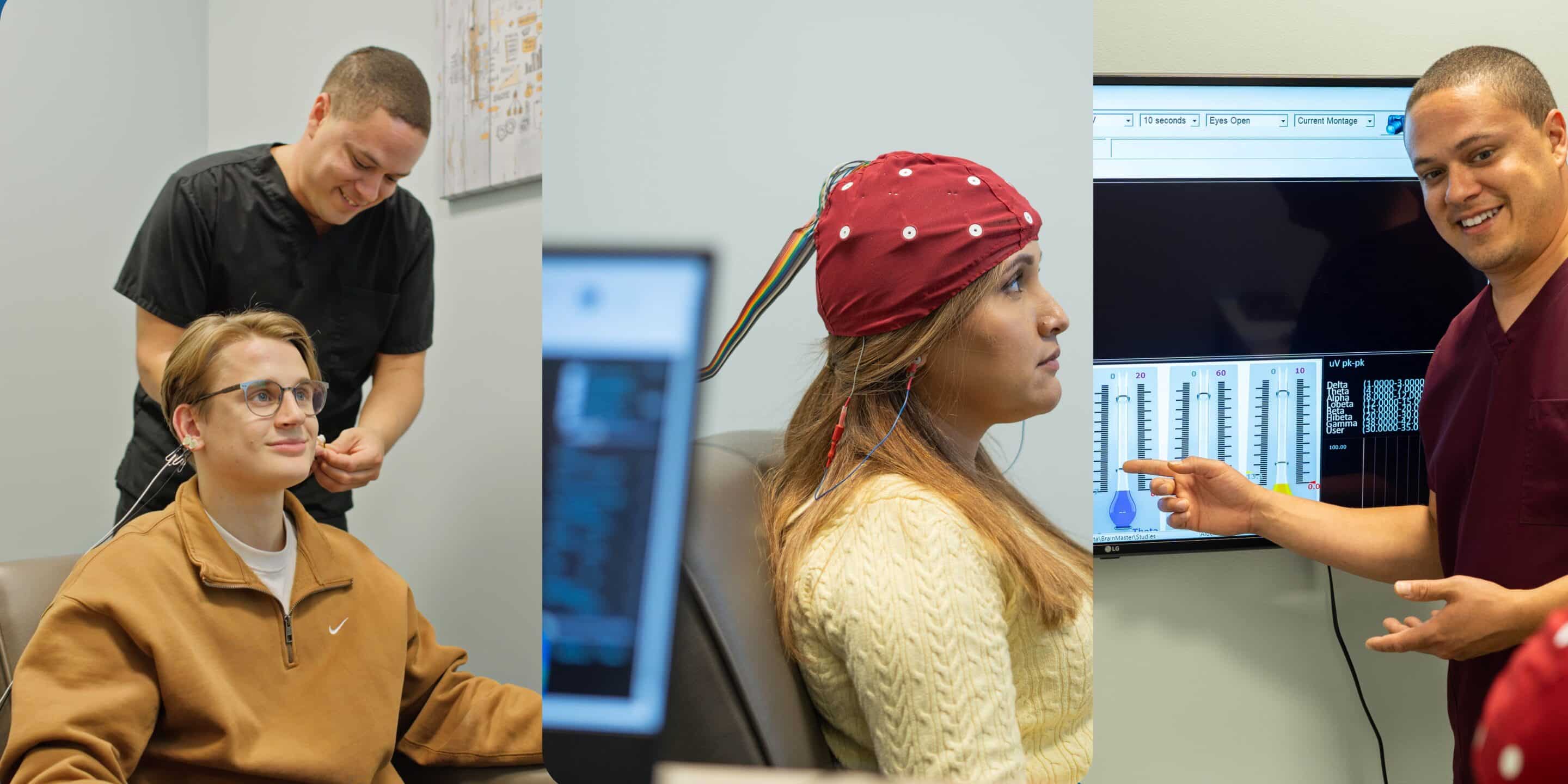Discover the Power of Neurofeedback Therapy

In the ever-evolving landscape of mental health treatment, a revolutionary approach is gaining momentum – neurofeedback therapy. This cutting-edge technique, rooted in the principles of biofeedback, offers a non-invasive, drug-free path to managing and improving various psychological conditions. By harnessing the power of the brain’s neuroplasticity, neurofeedback therapy empowers individuals to take an active role in their mental health journey.
Neurofeedback therapy has shown remarkable efficacy in reducing symptoms of some of the most challenging mental health conditions, such as Post-Traumatic Stress Disorder (PTSD), anxiety, and depression. For those grappling with PTSD, it provides a beacon of hope, enabling veterans and others affected by trauma to recalibrate their brain’s response to stress and fear. Similarly, individuals battling anxiety and depression have found solace in neurofeedback, as it aids in regulating mood and emotional responses, fostering a sense of control and well-being.
One of the most groundbreaking aspects of neurofeedback is its potential to reduce dependency on medications. As mental health care increasingly seeks sustainable, long-term solutions, neurofeedback therapy stands out. By addressing the root neurological patterns associated with mental health conditions, it offers a transformative path away from medication reliance. This shift not only enhances the quality of life for many but also aligns with a growing preference for holistic, patient-centered approaches to health care.
Neurofeedback Therapy's Emerging Role in Mental Health Care
As we dive into the details of this innovative therapy, we’ll explore how it’s being integrated into various healthcare settings, including its recent adoption by the Veterans Affairs (VA) to support our veterans. From the science behind it to the real-life impacts it’s having, this article will unveil how neurofeedback therapy is reshaping our understanding and treatment of mental health challenges.

When Shawney Bennati was in the Air Force from 2009 to 2018, she deployed for a time to Bagram Airfield in Afghanistan, working in materials management and volunteering in the hospital’s intensive care unit.
What she saw in the ICU and felt during the regular mortar attacks on the base left her with post-traumatic stress disorder, which manifested itself upon her return to the United States.
She sought relief in the form of “exposure” talk therapy and medication.
Neither proved ideal, but Bennati recently began neurofeedback therapy at the Van Zandt VA Medical Center, where she works, and she’s optimistic that she’s found the answer to her problem.
Neurofeedback therapy has been available since the 1970s, but until the last couple of decades, it’s been uncommon because the equipment was expensive and hard to get, according to Dr. Amy Goodson, clinical psychologist at Van Zandt.
It’s been available at Van Zandt for nine months, part of the VA’s Whole Health approach to care, and it’s been successful, according to Van Zandt officials.
Electrodes are placed on patients’ heads in spots that correspond with areas of the brain associated with calm and with agitated thoughts.
The electrodes are connected with a computer screen that registers changes in size or character of images that correspond to the respective detected impulses.
Patients interact with the images in a game — the object of which is to enhance the images associated with calm and diminish ones associated with agitation.
By learning how to manipulate those images, the exercise trains patients to calm themselves.
Over twice-weekly sessions for 20 weeks — 45 minutes at first, 30 minutes thereafter — the therapy can help patients keep PTSD, traumatic brain injury, generalized anxiety disorder, attention deficit hyperactivity disorder and substance use disorder under control, officials said.
Studies show that about 80% of patients receive substantial help, according to Goodson.
On Thursday, Bennati demonstrated a game in which her calm thoughts made the image of a lotus flower open, and fish to appear in a pond.
At first, the flower remained closed, then opened and closed quickly and repeatedly — until after a while, it remained open for an extended period.
In another game, she tried to make the image of a rocket in the center of the screen move fast, and the image of two rockets on the edges of the screen fade away.
The games reward calm brain waves and inhibit anxious ones, Goodson said.
They force her to focus on her breathing and to relax, Bennati said.
The games keep her attention away “from possible triggers,” including loud noises and discourage signs of tension like clenching of the jaw.
After just a few sessions, her habit of “picking” with her fingers, an expression of anxiety, has diminished, she said.
When Bennati was receiving exposure talk therapy, she ended up feeling more anxious, Bennati said.
By contrast, Bennati comes out of neurotherapy calm and relaxed.
She was uncomfortable with medical management because she didn’t like the thought of being dependent on medicine long-term.
Neurofeedback is definitely the most promising help she’s received, Bennati said.
She’s been telling her veteran friends about it.
Cited by: Altoona Mirror
Read More

Fasting for a Healthy Heart and Brain
Fasting has gained popularity not only for weight loss but also for its profound impact on heart health. Research suggests that periodic fasting can help lower blood pressure (BP), triglycerides, and cholesterol levels, all of which contribute to a healthier...

The Science of Fasting: Insulin Resistance, Cellular Repair & Anti-Aging
Fasting has gained widespread attention in the health and wellness community for its profound impact on metabolism, cellular regeneration, and longevity. Scientific research reveals that fasting not only reduces insulin resistance and stabilizes blood sugar but also...

Fasting Benefits: Types, Differences, and Health Advantages
Fasting has been practiced for centuries for religious, spiritual, and health reasons. In recent years, scientific research has illuminated its profound effects on longevity, metabolic health, and cellular repair. At Extivita, we recognize the benefits of fasting and...
